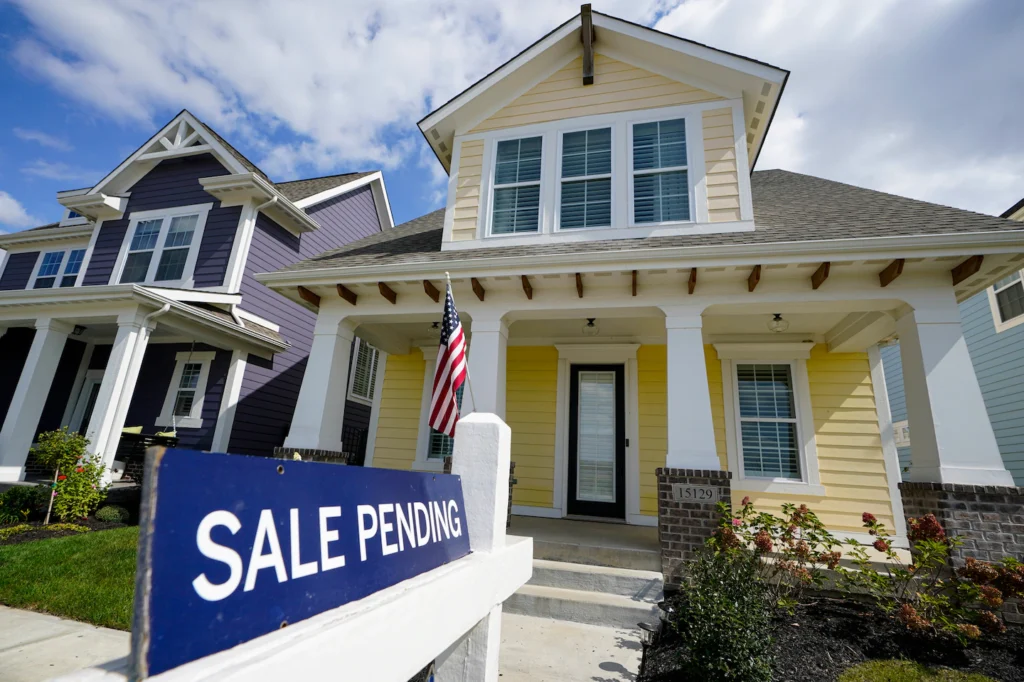
The rate for the 15-year fixed-rate mortgage averaged 4.43 percent, down from last week’s average of 4.48 percent. A year ago at this time, it averaged 2.29 percent. The five-year adjustable rate averaged 4.08 percent, up from last week’s 3.98 percent. A year ago at this time, it averaged 2.59 percent.
“I’ve been waiting for mortgage rates to drop a little for a while,” said George Ratiu, senior economist for Realtor.com. “Generally, mortgage rates reflect the uncertainty in the markets and tend to respond by dropping a little when there’s more demand for bonds.”
While a decline in mortgage rates is welcome news for buyers, “a one-week change in direction isn’t a trend,” said Ratiu.
Rates made headlines in April when they hit 5 percent for a 30-year fixed-rate mortgage for the first time in more than a decade. This followed months of rates that fluttered between 2 and 3 percent after they fell to their lowest level on record in December 2020 during the pandemic, when the 30-year fixed-rate average was 2.68 percent, according to Freddie Mac.
They are still a far cry from the heights experienced in October 1981, when the average for a 30-year fixed-rate mortgage was 18.45 — the highest year in Freddie Mac’s history of rates dating back to 1971.
“Recency bias may have many thinking that mortgage rates below 4 percent is normal, but it is anything but normal from a historical perspective,” said Mark Fleming, chief economist for First American Financial, a title and settlement services company. “In fact, the historical average for the 30-year fixed-rate mortgage is nearly 8 percent.”
Still, Fleming acknowledges that rising mortgage rates reduce affordability. Consumer house-buying power declined by $77,000 since April 2021, according to First American’s analysis.
“Mortgage rates have generally been declining since 1981, when they were at 18 percent,” Fleming said. “While mortgage rates today are surpassing rates from a decade ago in 2012, they remain lower than two decades ago in 2002.”
Mortgage rates are expected to continue their ascent. On Tuesday, Federal Reserve Chair Jerome H. Powell underscored the central bank’s resolution to keep raising interest rates until there is clear evidence inflation is steadily falling.
The Federal Reserve raised its benchmark interest rate earlier this month by half a percentage point, the sharpest increase since 2000 and the second of seven hikes expected this year. Although the central bank does not set mortgage rates, its own rate-setting activity does indirectly affect them.
Ratiu believes mortgage rates have the potential to reach 6 percent sometime this year because of inflation and the continued intention of the Federal Reserve to raise the federal funds rate.
“However, nothing happens in isolation, and these are uncertain times, so an economic downturn, geopolitical issues and supply issues could temper that trajectory for mortgage rates,” Ratiu said.
Seasoned homeowners were stung in past decades by double-digit rates when they bought their homes. Rates these days are still much lower in comparison. But today’s home buyers are facing a different housing market, experts said.
Previous buyers did not experience such a steep, abrupt increase in costs to purchase a home and rising rates at the same time, said Brian Koss, executive vice president of Mortgage Network in Danvers, Mass.
“The severity of both happening simultaneously is the killer combo. Incomes have increased and employment is high, but the costs of all things, especially housing, is painful,” Koss said. “Sure, rates have been higher. But the combined housing costs of rates, taxes and acquisition costs — not to mention repairs and appliances — are all at peak levels.”
Another difference in today’s market is that demand is at its peak, while housing supply is at its trough, Fleming said.
“This severe imbalance in the market has resulted in rapid house price appreciation and made for one of the most competitive housing markets in history,” Fleming said.
Rising rates are affecting new mortgages, with applications decreasing by 11 percent last week from one week earlier, according to the Mortgage Bankers Association. It marked the first dip in applications in three weeks. Applications to refinance slid 10 percent during the same time period, and demand was 76 percent lower than the same week one year ago as the number of homeowners who stand to benefit from refinancing shrinks.
“Mortgage rates at 13-year highs continue to cool borrower demand for refinances and are an added hurdle — along with low supply and steep price appreciation — for households looking to buy a home in this spring’s competitive market,” Bob Broeksmit, MBA president and CEO, said in an email. “MBA expects rates to plateau near current levels before declining to around 5 percent by the end of the year.”
Buyers facing this challenging market should work to lower their risk factors when applying for a loan, because the more added risk factors, the higher the rate is going to be, said Glenn Brunker, president of Ally Home, a mortgage lender.
“To ensure a buyer is securing the lowest rate possible, taking steps to shore up credit scores — such as paying off credit card debt — or saving for a larger down payment may be worthwhile,” Brunker said.

